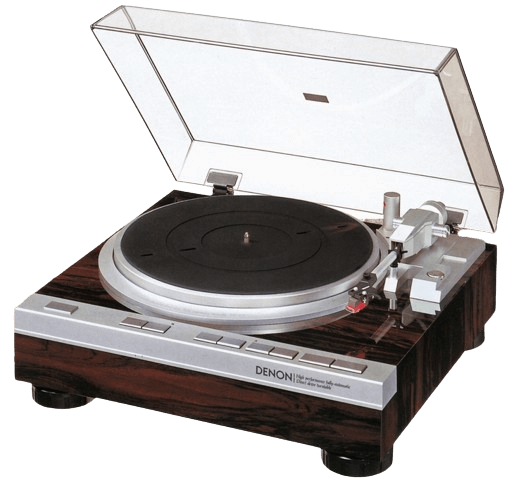As a longtime vinyl enthusiast, I often come across the debate over manual vs. automatic turntables, which one is best?
The sole purpose of turntables is to play music from vinyl records. When the tonearm is lowered onto the rotating record it plays music. In the tonearm, a cartridge containing a stylus or needle is attached so that when the stylus moves over the groove of the record, the sound is produced. The mechanism of how the tonearm is lowered is what differentiates these turntables.

Every first-time buyer goes through the dilemma of choosing the right turntable for him. I faced a similar situation when I was buying my first turntable. So, let us understand the differences in detail to clear your all the doubts which will help you make an informed decision.
What is a Manual Turntable?
When we have to play records on manual turntables, first we place the record on the turntable and rotate the platter, it is necessary to lift the tonearm from its rest position manually and put it at the beginning of the record groove.
When the record is over, the tonearm needs to be manually lifted back to its original position otherwise stylus keeps running on the rotating record. So in manual turntables, you have to do all the labor.
At the beginning of their vinyl record collection journey, people often forget to lift the tonearm after it is finished, which can damage the record and mess up the stylus.

Sound Quality
The sound quality of manual turntables is excellent as compared to its automatic counterpart. These turntables give a pure vinyl experience as no extra machinery is involved so the music from the record is distortion-free.
Maintenance
The maintenance of manual turntables requires regular cleaning of the stylus and other components and nothing else as everything is manually handled so the maintenance cost is also less.
Advantages of Manual Turntable
- The sound quality is always best on these turntables, especially the belt-drive manual turntables.
- These turntables are available in every price range, you can get better-sounding manual turntables at similarly priced automatic turntables.
- It requires very little maintenance as everything is handled physically.

Disadvantages of Manual Turntable
- If you’re a beginner who just started playing music on a turntable, it can be frustrating to do everything manually.
- If the stylus continues to move after the end of the record, it is likely to be worn out and may even break if you do not put it properly on the record.
- If you forget to lift the tonearm, it could damage your precious record.
What is an Automatic Turntable?
As the name suggests, when we play a record on automatic turntables, the tonearm automatically lifts itself from the resting position and positions itself on the edge of the rotating record and when the record is finished, it automatically swing back to its original position and motor turns off.
The only thing, we have to do is to switch on the turntable and place the record on the platter.
Think of a situation, if we fall asleep while listening, then the automatic turntables are more convenient because we do not have to worry about lifting a tonearm as soon as the record is finished.

Sound Quality
The sound quality of automatic turntables is average as compared to manual because the components that automatically lift the tonearm interfere with the drive system of the turntable, distorting the sound output.
Maintenance
With the extra components in these turntables, the possibility of breakage also increases. Therefore, automatic turntables’ maintenance cost is higher than manual ones.
Advantages of Automatic Turntable
- It is suitable for beginners, as it reduces the worry of accidentally dropping the stylus and breaking it.
- The fully automatic direct-drive turntables give the same torque from the start.
- Playing records on these turntables makes you feel more relaxed, as you do not have to leave your place when the song ends.
Disadvantages of Automatic Turntable
- The sound quality is average compared to the manual because more component produces extra vibrations that result in uneven sound output.
- They are expensive due to extra components and not many options are available in the market.
- Maintenance costs are high compared to their counterparts.
Which is the best: Automatic vs Manual?
Considering the sound quality which is the sole purpose of the turntables, then the manual is superior and provides an exceptional audio output at affordable prices but you have to do all the handiwork.
Manual turntables are always the first choice of audiophiles, it gives a pure, detailed, and immersing audio experience.
Now picture a lazy Sunday morning, you are sitting on a couch reading a book with a coffee. Now with a push of a button, an automatic turntable effortlessly plays your favorite record, so you can just sit and relax, without the hassle of leaving a cozy spot.
The sound quality of turntables also depends on other components such as the cartridge, amplifier, and type of speaker. Another factor is whether the turntable is belt-drive or direct-drive. The automatic turntables with the best quality components can provide audio quality comparable to manual turntables.
I bought my Denon-47F for the same reason as it was the best fully automatic turntable of our time. The sound quality was top notch.

Considering the pros and cons of both types of turntables, you can base your decision. The Automatics are all about convenience and manuals are known for their immersive experience of sound.
FAQ
No, this is not the case if the decks are configured correctly. All turntables (automatic or manual) are required to be set up with appropriate vertical tracking force and anti-skate, otherwise it could potentially damage the records.
